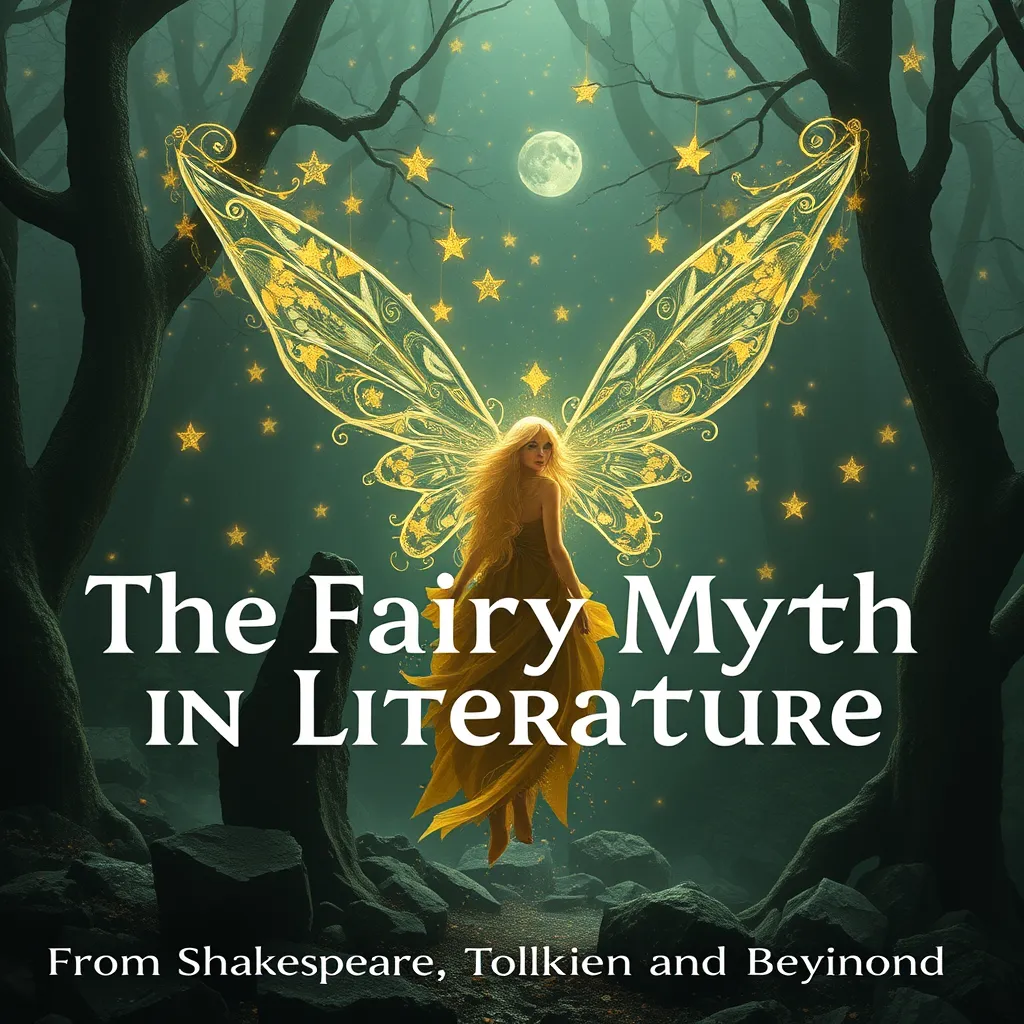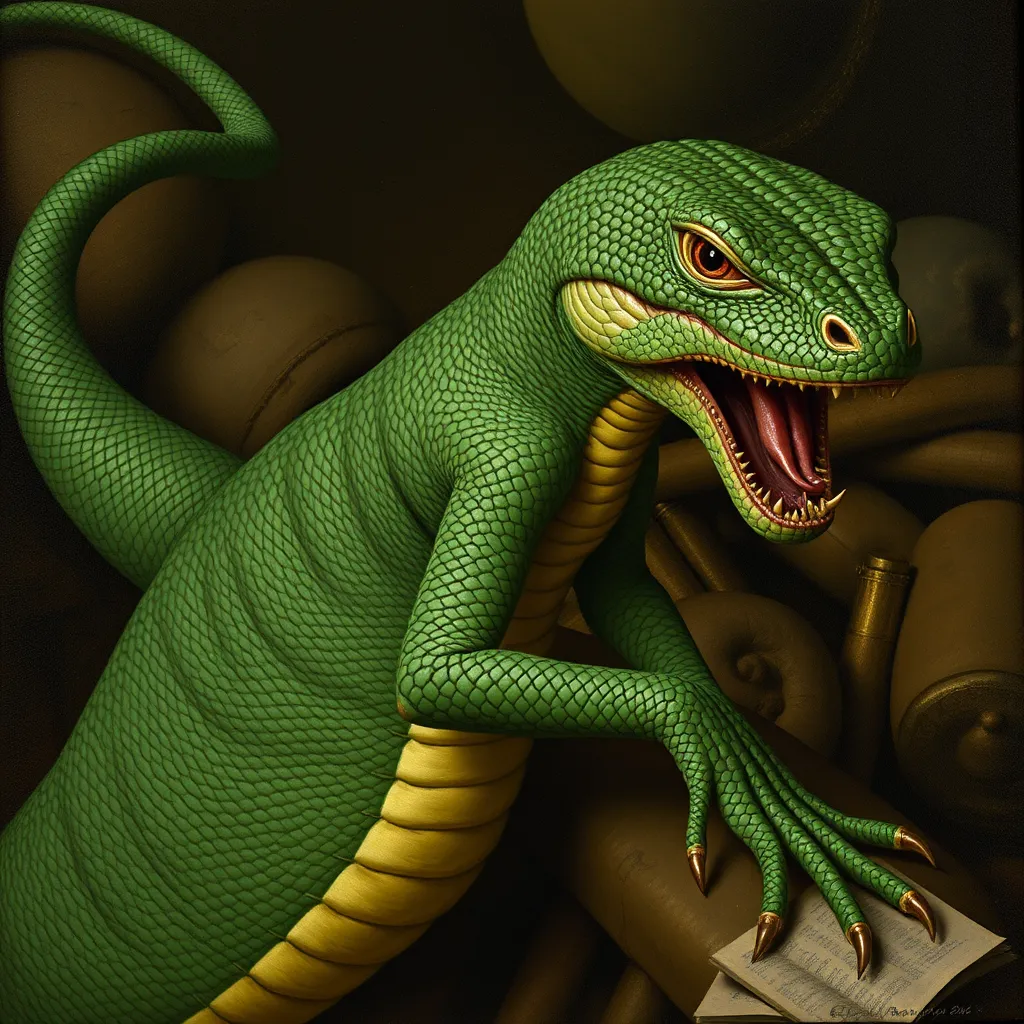The Fairy Myth in Literature: From Shakespeare to Tolkien and Beyond
I. Introduction
The fairy myth is a rich and diverse narrative that has woven its way through literature for centuries. Defined broadly, fairy myths encompass stories featuring magical beings, enchanting landscapes, and themes of transformation and morality. These narratives often reflect the human experience, exploring the boundaries between reality and fantasy, good and evil, and individuality and community.
This article seeks to trace the evolution of fairy myths from their early roots in folklore through the works of iconic authors such as William Shakespeare and J.R.R. Tolkien, exploring how these myths have shaped and been shaped by cultural contexts over time.
II. The Origins of Fairy Myths
Fairy myths can be traced back to ancient folklore, where they served as a means to explain the inexplicable and impart moral lessons. These stories were often communicated orally, evolving over time as they passed from generation to generation.
In Europe, fairy tales were influenced by local traditions, with each culture contributing its own unique elements:
- Irish Folklore: Featuring leprechauns and banshees, often highlighting themes of fate and the supernatural.
- Scottish Legends: Including the fae folk, who were believed to interact with humans in both benevolent and malevolent ways.
- Germanic Tales: Influencing the structure of fairy tales with moral lessons and archetypal characters.
This amalgamation of various traditions laid the groundwork for the fairy myths that would later be popularized in literature.
III. Shakespeare’s Contribution to the Fairy Myth
William Shakespeare’s works are pivotal in the development of fairy myths in literature. In A Midsummer Night’s Dream, Shakespeare intricately weaves the lives of fairies with those of mortals, showcasing a world where magic blurs the lines of reality.
Shakespeare’s portrayal of fairies, led by characters such as Oberon and Titania, encapsulates the whimsical yet tumultuous nature of these beings. The play’s themes of love, jealousy, and transformation are enhanced by the interference of fairies, reflecting human emotions in a fantastical light.
The blending of reality and fantasy in Shakespeare’s work has had a lasting impact on literature, inspiring countless authors to explore the interplay between the mundane and the magical.
IV. The Romantic Revival of Fairy Tales
The Romantic period saw a renewed fascination with folklore and fairy tales, as writers sought to reconnect with nature and the supernatural. This era celebrated imagination and emotion, leading to the revival of traditional myths.
Key figures during this period include:
- The Brothers Grimm: Collectors and storytellers who preserved and popularized German fairy tales, emphasizing moral lessons and dark themes.
- Hans Christian Andersen: Known for his original fairy tales, such as The Little Mermaid and The Ugly Duckling, which often contained poignant social critiques.
Fairy tales of the Romantic era showcased characteristics such as:
- Emphasis on nature and the supernatural.
- Complex characters often faced moral dilemmas.
- Symbolism representing deeper societal values and beliefs.
V. J.R.R. Tolkien and the Reimagining of Fairy Myth
J.R.R. Tolkien stands as a monumental figure in the reimagining of fairy myth in modern literature. His perspective on fairy tales was profound; he viewed them as a means of conveying deep truths and exploring the human condition.
In The Hobbit and The Lord of the Rings, Tolkien introduces readers to a richly constructed world populated by elves, dwarves, and other mythical beings. His portrayal of fairies, particularly through the character of Galadriel, emphasizes both their beauty and their moral complexity.
Tolkien’s influence on modern fantasy literature is immeasurable, inspiring a new generation of writers to delve into their own mythologies and create expansive worlds where fairy tales thrive.
VI. The Evolution of the Fairy Myth in Contemporary Literature
In contemporary literature, fairy myths continue to evolve, with modern authors drawing upon their rich heritage to explore new themes and narratives. Some notable trends include:
- Reimagining Classic Tales: Authors often take established fairy tales and recontextualize them, offering fresh perspectives and modern morals.
- Themed Anthologies: Collections that explore various aspects of fairy myths, showcasing diverse voices and interpretations.
- Young Adult and Children’s Literature: Fairy myths play a significant role in shaping stories that address themes of identity, transformation, and morality.
Contemporary narratives often delve into themes of:
- Transformation and personal growth.
- Identity and belonging.
- Morality and ethical dilemmas in a complex world.
VII. The Cultural Impact of Fairy Myths
The cultural impact of fairy myths extends beyond literature, permeating various forms of media and art. Their relevance persists in:
- Film: Movies like Frozen and Pan’s Labyrinth draw heavily on fairy myth themes, appealing to both children and adults.
- Art: Artists continue to be inspired by fairy tales, using them as a vehicle for social commentary and personal expression.
Moreover, fairy myths play a vital role in shaping societal values and morals, often encapsulating lessons that resonate across cultures and generations. Their adaptability allows them to be reinterpreted in diverse cultural contexts, making them universally significant.
VIII. Conclusion
From the enchanting realms of Shakespeare’s fairy tales to Tolkien’s epic mythologies, the evolution of fairy myths in literature showcases their enduring appeal. These narratives continue to resonate with audiences, offering insights into the human experience and the complexities of life.
As we move forward, the future of fairy myths in literature appears bright, with new voices and interpretations emerging to breathe life into these timeless tales. Ultimately, fairy myths remind us of the magic inherent in storytelling and the profound truths hidden within fantastical worlds.



